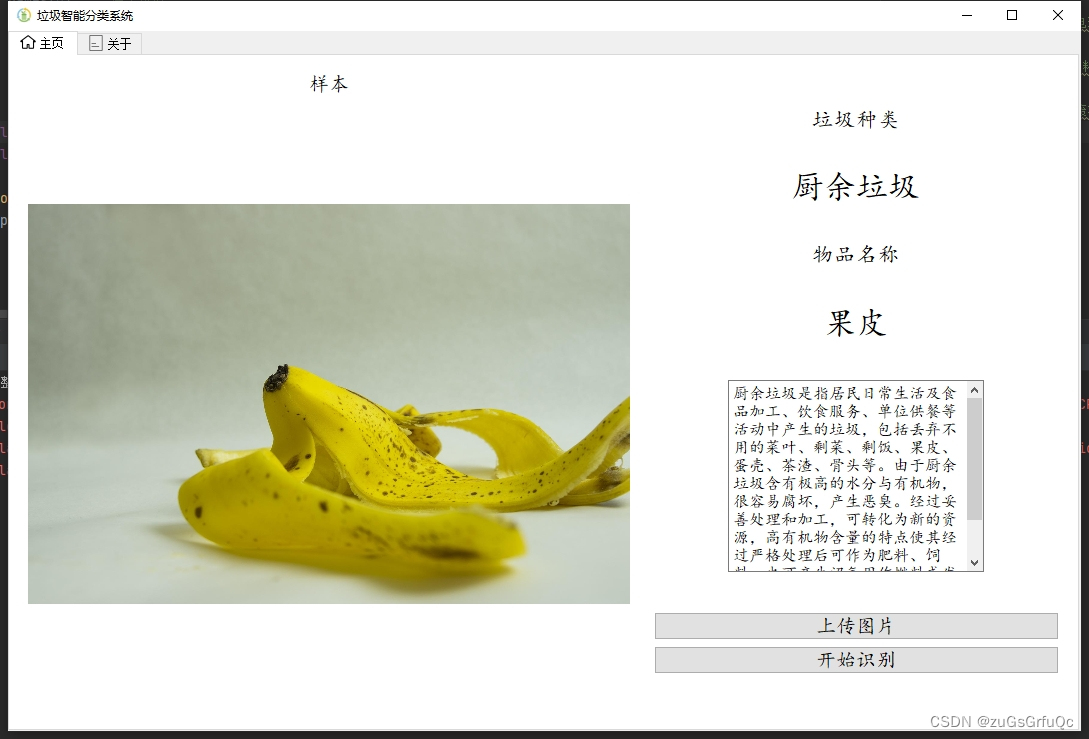基于mobilenet的垃圾分类系统,TensorFlow开发

基于MobileNet的垃圾分类系统是一种基于人工智能技术的创新解决方案,使用了TensorFlow开发框架,旨在通过识别垃圾物品的特征,实现自动分类和分拣的功能。本文将介绍该垃圾分类系统的原理与技术细节,并探讨其在实际应用中的优势。
垃圾分类一直是环境保护领域的重要问题之一,传统的手动分类方式费时费力且效率低下。而基于人工智能的垃圾分类系统能够通过计算机视觉和深度学习的技术手段,实现对不同垃圾物品的自动辨识和分类。在该系统中,MobileNet被选为底层的卷积神经网络模型,其在保持高精度的同时具备轻量级的特点,能够满足嵌入式设备的资源限制和实时性要求。
垃圾分类系统的开发过程中,采用了TensorFlow作为主要的开发框架。TensorFlow是一种开源的机器学习框架,拥有丰富的工具和函数库,能够方便地构建和管理深度学习模型。通过TensorFlow,我们可以快速搭建垃圾分类系统的神经网络结构,并进行模型的训练和优化。
在垃圾分类系统中,远程调试功能是一项重要的技术支持,使得开发人员可以通过远程连接实时监控和调试设备,提高开发效率和准确性。通过远程调试,开发人员能够在实际运行环境中动态调整模型参数,优化系统性能,并实时获取设备状态和运行日志,从而更好地满足用户需求。
此外,系统的稳定性和可靠性也是垃圾分类系统设计中需要考虑的关键因素。在开发过程中,我们注重对系统进行全面的测试和验证,保证其在各种场景和条件下都能正常运行。同时,我们采用了先进的算法和架构设计,提高了系统的鲁棒性和可扩展性,使其能够适应不同规模和复杂度的应用场景。
最后,用户体验是评价一个垃圾分类系统优劣的重要指标之一。我们的垃圾分类系统通过深度学习算法实现了高准确率的分类结果,并通过友好的用户界面展示给用户。用户在使用系统时,只需将待分类的垃圾物品放置在设备上,系统即可自动识别并分类,为用户提供便捷和高效的体验。
综上所述,基于MobileNet的垃圾分类系统是一种创新而高效的解决方案。通过采用TensorFlow开发框架,远程调试支持以及稳定可靠的设计,该系统能够准确地识别和分类垃圾物品,提高垃圾分类的效率和准确性,为环境保护事业做出积极贡献。在未来,我们将继续优化和完善系统的性能和功能,推动垃圾分类技术的发展与应用。
相关代码,程序地址:http://lanzoup.cn/669461826983.html





















 265
265











 被折叠的 条评论
为什么被折叠?
被折叠的 条评论
为什么被折叠?








